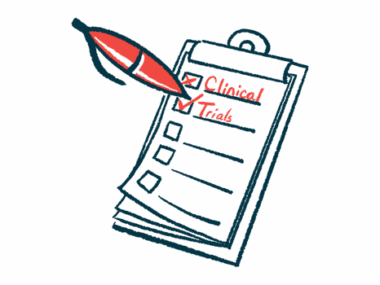FAQs About Anesthesia in Angelman Syndrome
Written by |

Very likely, a child with Angelman syndrome will need to undergo a procedure requiring anesthesia at some point.
Here are some frequently asked questions about anesthesia, and how it relates to Angelman syndrome and your child.
What is anesthesia?
Anesthesia is the use of medicines to mitigate pain during surgery and other medical procedures. It also allows physicians to work safely and effectively by limiting movement during a procedure.
When might my child need anesthesia?
Your child may need anesthesia prior to a surgery to prevent pain and discomfort, and possibly more often than people without this syndrome would be given anesthesia.
People with Angelman syndrome can need anesthesia for routine or diagnostic procedures, such as dental exams or positron emission tomography (PET) scans, because they cannot express pain well or easily keep still during procedures.
These patients, especially children, can also have a hard time understanding what they need to do or what is going to happen, leading to a lack of cooperation.
People with Angelman syndrome also tend to be prone to seizures or excitable movements, so that doctors may favor the use of anesthesia.
What are the different types of anesthesia?
There are four major types of anesthesia: general, regional, sedation, and local.
General anesthesia can be given as a gas the patient inhales, or via an intravenous (IV) infusion. It causes the patient to lose consciousness and not react to pain signals.
In regional anesthesia, such as an epidural, the patient is fully awake but an entire region or part of their body is unresponsive to pain.
Sedation involves the use of medication that makes patients calm and sleepy. Doctors sometimes use it in conjunction with analgesics (painkillers).
Local anesthesia can come in the form of a spray, ointment, or injection that affects a small, limited part of the body.
What type of anesthesia might my child be given?
Doctors will commonly use general anesthesia for people with Angelman syndrome. This is because it will render them unconscious, making procedures safer, more efficient, and certain not to cause undue pain.
Depending on the procedure, and the patient’s disposition and medical history, doctors may also use monitored sedation.
In rare cases, they may use regional anesthesia given via an epidural. However, this is usually not recommended as agitation and movement can make the procedure more dangerous. Scoliosis, or an abnormal sideways curvature of the spine, can also make it more difficult to administer an epidural anesthetic.
Are there any risks?
Studies have not found a greater risk of complications with anesthesia’s use in children with Angelman syndrome relative to the general public. However, Angelman is a rare condition and such studies have been small in nature. Some studies report instances of Angelman patients having low heart rates while under anesthesia. There is also a potential risk of complications due to skull and airway abnormalities.
Children with Angelman syndrome are at risk of the same complications with anesthesia that affect the general public, such as nausea or dizziness, constipation, body aches, and vision problems due to a reaction with any of the medications.
Does my child need prior testing?
Your physician will review your child’s medical history prior to any procedure. They may ask you for more information about any medications your child is taking.
Depending on your child’s medical history, your physician may recommend further testing. For example, if your child has a history of heart issues, your physician may require heart function tests prior to anesthesia. If your child has a history of seizures, your doctor may consult with a neurologist, who may recommend tests to assess whether the procedure is safe for your child.
Can my child eat or drink prior to anesthesia?
Anesthesia can make it hard for patients to cough and can lead to vomiting if there is anything in the stomach. If a patient vomits during surgery and aspirates (breathes into the lungs) any of the vomit, it can lead to complications that can include pneumonia. Your child, as a general rule, should not to eat or drink anything eight hours prior to the procedure.
Always follow the instructions of your physician or anesthesiologist about limitations on food and drink prior to your child being given anesthesia.
What are the side effects?
The most common side effects after anesthesia are pain at the injection site, headache, nausea, and vomiting.
Last updated: Oct. 12, 2020
***
Angelman Syndrome News is strictly a news and information website about the disease. It does not provide medical advice, diagnosis, or treatment. This content is not intended to be a substitute for professional medical advice, diagnosis, or treatment. Always seek the advice of your physician or other qualified health provider with any questions you may have regarding a medical condition. Never disregard professional medical advice or delay in seeking it because of something you have read on this website.





